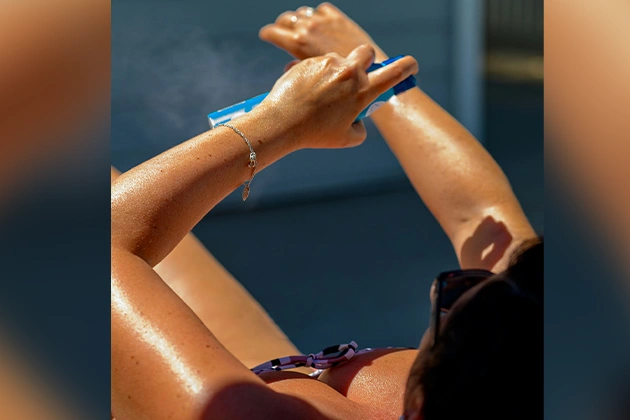For the longest time, sunscreens were synonymous with thick, sticky, greasy products that leave a white cast on your face. Luckily, that doesn’t have to be the case anymore. The world of sun protection is rapidly evolving, as consumers are not settling for the bare minimum. Today, we have innovative formulas that prioritise comfort and texture, as well as offer multi-functional benefits.
The evolution of sunscreen textures
The messy and unpleasant experience of the traditional sunscreen is one of the major reasons why so many adults choose to skip SPF, despite the well-known risks of sun exposure. These formulations were typically thick and oily, making them feel heavy on the skin and difficult to rub in. It was primarily a functional product, and so the customer experience was an afterthought.
However, in recent years, the industry has undergone a significant transformation – developing innovative formulas that are not just effective but enjoyable to use too. This meant moving away from the heavy oil bases and experimenting with water-based serums or gel-like textures. The ISDIN Fotoprotector Fusion Water Sunscreen, for instance, has almost a milky quality, where the fluid absorbs into the skin in seconds. It’s a lightweight and seamless texture that leaves no residue or white cast, completely changing the sunscreen experience.
Why lightweight formulations matter
The move towards more lightweight formulations is not just about aesthetics – it’s also about compliance. When a sunscreen feels good on the skin, people are more likely to use it daily, as opposed to only on the beach days. This is especially true for facial sunscreens, which are often worn underneath makeup.
A lightweight, non-greasy sunscreen can become a seamless part of a daily skincare routine, without interfering with other products. In fact, certain formulations can even support skincare through hydrating ingredients (i.e. hyaluronic acid) and antioxidants. And, since it leaves no white cast or grease behind, liquid and powder makeup products can be applied on top with no issues. This improved wearability is a major factor in encouraging regular, daily use of sun protection amongst consumers.
Meeting the demands of modern consumers
Beyond basic protection against UVA/UVB rays, modern sunscreens are packed with innovative ingredients that shield your skin from various environmental aggressors. For example, Mediterranean Algae Extract and Vitamin E found in ISDIN sunscreen are known for their defensive properties against urban pollution, blue light, infrared and free radical damage due to heat.
As such, these multi-functional sunscreens slow down premature signs of ageing in more than one way, all without compromising the feel or finish of the product that modern consumers demand.
What’s next in sun protection?
The sun protection industry has come a long way already, but innovation is by no means slowing down. The future of sun care is heading towards even greater consumer experience, with a huge focus on personalisation. In the future, we can expect a wider selection of formulas for different skin types and preferences.
Moreover, sustainability is undoubtedly an important part of development in the sun care sector. Companies are looking to find the most eco-friendly formulations and packaging, not only protecting our skin but our planet too.
Ultimately, the goal is to continue blurring the lines between skincare and sun protection. The industry will keep on innovating seamless, all-in-one products that make sun protection easier and more effective than ever before.










